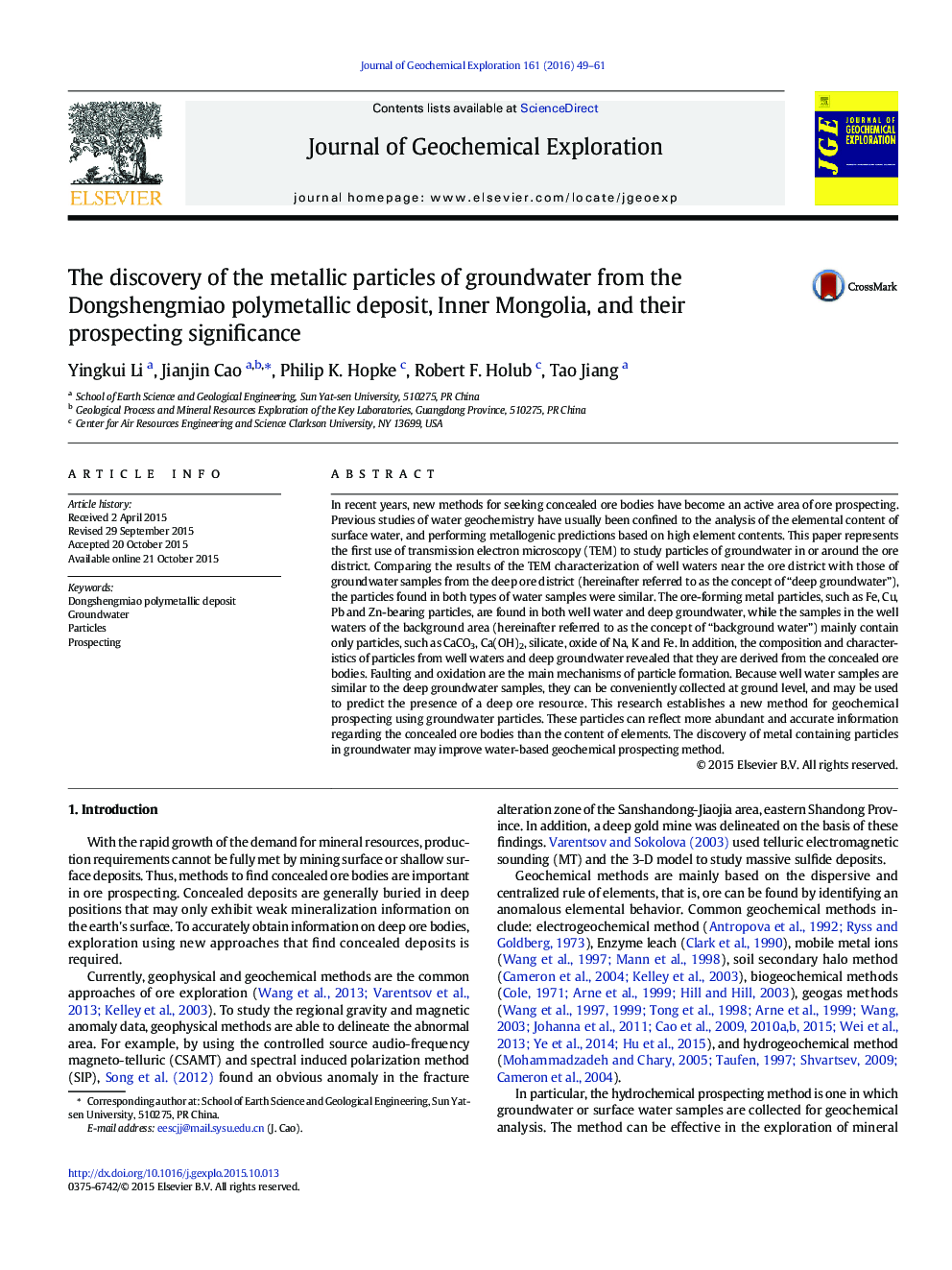| کد مقاله | کد نشریه | سال انتشار | مقاله انگلیسی | نسخه تمام متن |
|---|---|---|---|---|
| 4456960 | 1620898 | 2016 | 13 صفحه PDF | دانلود رایگان |

• We present metallic particle data of groundwater from the Dongshengmiao deposit.
• TEM was used to detect groundwater particles in the research areas.
• Ore-forming particles that contain Cu, Pb, Zn and Fe were found in the groundwater of near-ore areas.
• The component and combination of ore-forming particles show similarity to ore samples.
• We think this research may establish a new method for groundwater particle geochemical prospecting.
In recent years, new methods for seeking concealed ore bodies have become an active area of ore prospecting. Previous studies of water geochemistry have usually been confined to the analysis of the elemental content of surface water, and performing metallogenic predictions based on high element contents. This paper represents the first use of transmission electron microscopy (TEM) to study particles of groundwater in or around the ore district. Comparing the results of the TEM characterization of well waters near the ore district with those of groundwater samples from the deep ore district (hereinafter referred to as the concept of “deep groundwater”), the particles found in both types of water samples were similar. The ore-forming metal particles, such as Fe, Cu, Pb and Zn-bearing particles, are found in both well water and deep groundwater, while the samples in the well waters of the background area (hereinafter referred to as the concept of “background water”) mainly contain only particles, such as CaCO3, Ca(OH)2, silicate, oxide of Na, K and Fe. In addition, the composition and characteristics of particles from well waters and deep groundwater revealed that they are derived from the concealed ore bodies. Faulting and oxidation are the main mechanisms of particle formation. Because well water samples are similar to the deep groundwater samples, they can be conveniently collected at ground level, and may be used to predict the presence of a deep ore resource. This research establishes a new method for geochemical prospecting using groundwater particles. These particles can reflect more abundant and accurate information regarding the concealed ore bodies than the content of elements. The discovery of metal containing particles in groundwater may improve water-based geochemical prospecting method.
Journal: Journal of Geochemical Exploration - Volume 161, February 2016, Pages 49–61